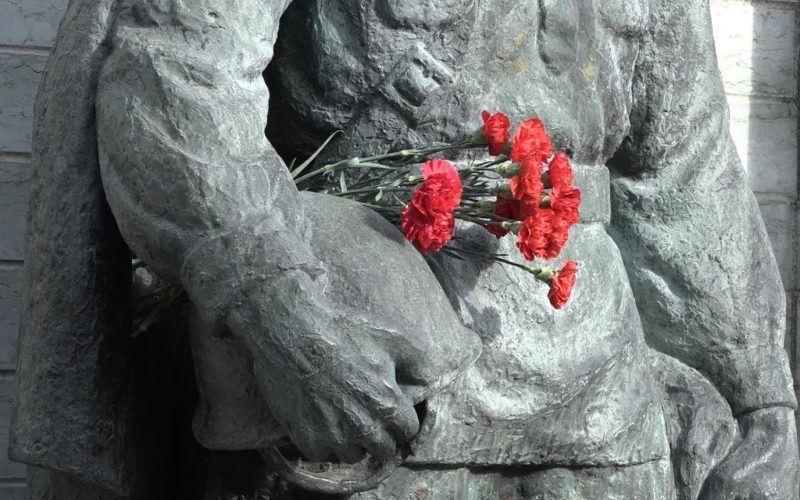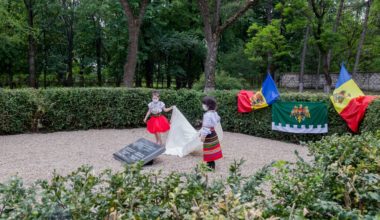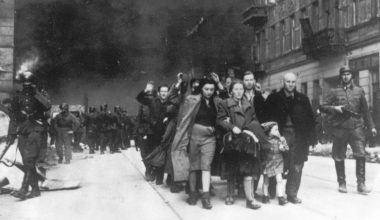Dear Subscribers,
The staff members of Remembrance, Research and Justice: Heritage of WWII in the 21st century, a new interdisciplinary research project, are happy to greet you with our first newsletter ever. If you received this letter from a friend and have not yet subscribed, you can easily do it HERE. If you are reading this on our website, we would appreciate if you share our link in social media.
There is no surprise that we launched our project days before the 75th anniversary of VE-Day, since the object of our research are modern national and supranational WWII remembrance practices. On our freshly opened website, Remembrance.ru, you will find information illustrating different approaches to WWII memory in different countries and learn how those differences in rememberance policies may lead to conflicts, public and international. To find out more about the project, please click HERE; we are open for cooperation and looking forward to your feedback as well as your analytical and discussion papers that meet the project’s requirements and its area of focus.
Now, what are the top important news highlights of this April?
Monuments on the move
Early in April, a monument to Soviet Marshal Ivan Konev was dismantled in Prague, crowning the years’ long attempts of the Czech political right to erase the memory of the Soviet military commander; you will find a special article on our website telling the story of those efforts. Several days after the monument left its pedestal, destruction of war memorials was made a criminal offense in Russia – details of the new Criminal Code amendment you will find under THIS link. However, this measure could not stop barbaric acts against Soviet memorials in Eastern Europe. In April, memorial graves of Red Army soldiers were desecrated in Dobrich, Bulgaria and Vinnytsia, Ukraine. A real epidemic of monument desecration reached Russia as well: in the Komi Republic, unidentified perpetrators painted swastikas on the monument dedicated to Latvian victims of Stalinist Terror.
A strange thing happened to the monument to Marshal Georgy Zhukov on Manezhnaya Square in Moscow. At first, the monument was replaced with a new one without proper permission; then the old version returned to where it had always been. We have done our best to find full information possible on this matter. Another publication is devoted to Lenin monuments: we have counted the number of monuments newly installed or restored in Russia before the 150th anniversary of Vladimir Lenin.
Memory laws
Applying memory laws in East European and ex-Soviet countries has become another field of research for us. On the verge of the 75th anniversary of the Great Victory, the Latvian Saeima adopted a law that prohibits public wearing of Soviet uniform and symbols, while a resident of Lithuania was sentenced by a court of law for the “Soviet crimes denial” in his blog. After having thoroughly studied the facts of this case, we believe it deals with attempts at direct censorship. At the same time, a sentence by a Russian court – a substantial fine for an Ivanovo region resident who denied the Holocaust – looks much more reasonable.
Special attitude towards Nazi collaborators
Unfortunately, on the verge of the 75th anniversary of the victory over Nazis, the shameless glorification of Nazi collaborators continued in Eastern European countries. In Ukraine, a ritterkreuz, a public award, was given in a ceremony to a veteran of the SS Galicia Division (who made a point of demonstrating a Nazi salute in response). In Lithuania, the Highest Administrative Court took the side of Jonas Norejka, a participant of the Holocaust in Lithuania. A portrait of another Holocaust perpetrator, Kazys Škirpa, appeared on the cover of the in-house journal of the country’s defense ministry. Finally, Prague saw the inauguration of a monument dedicated to the Russian Liberation Army soldiers headed by Andrey Vlasov. As we found out, more acts of that kind are yet to follow: another Vlasov memorial is planned to be installed in Prague in 2022. On the contrary, the latest step taken by Croatian leaders looks rather amazing: for the first time since 2014, they joined a mourning ceremony at Jasenovac memorial site, the location where the notorious concentration camp was built by Ustashe collaborators during the war.
Investigating crimes by Nazis and their proxies
Late in April 2020, Russia’s Investigative Committee launched a legal inquiry on the episodes regarding the crimes committed by Finnish occupation forces in Karelia from 1941 till 1944. We looked into the matter thoroughly and discovered that, in an official Finnish comment on this decision by the Russian agency, there was a reference to the 1947 Treaty of Peace which Helsinki had previously rejected as null and void. Earlier, the Investigative Committee opened a criminal case against German Einsatzkommando member Helmut Oberlander, however, Canada suspended his deportation because of the coronavirus epidemic.
Analytical papers
For the last week, new interesting articles appeared on our website. Alexander Dyukov (Institute of the Russian History of the Russian Academy of Sciences) analyzes the legal basis of Nazi criminals’ persecution as well as the restitution of Holocaust victims’ property. Sergey Romanov (Katyn Files web project) demonstrates the inconclusiveness of a RIA Novosti news agency report denying that Soviet authorities were responsible for shootings of Polish soldiers in Katyn in 1940. Youry Vasilenko (Higher School of Economics in Perm) explains the political motives behind General Franco exhumation and reburial. Andrey Manchuk, a Ukrainian journalist, tells the story of West Ukrainian communists who were fighting Francoists during the Civil War in Spain. We also highly recommend the article by Konstantin Mikhaylov, editor-in-chief of Hraniteli Naslediya (‘keepers of legacy’) website, published in Ogonyok magazine. The article describes, in detail, the large-scale Czech initiative named Legion 100 that includes erecting monuments to Czech legionnaires.
* * *
We try to give the fullest coverage possible of all topics related to the issues of WWII remembrance, checking the veracity and correctness of all information presented here. Please re-send this letter to your friends and ask them to subscribe if you agree that we are doing an important job.
Best wishes,
Remembrance, Research and Justice: Heritage of WWII in the 21st century team


